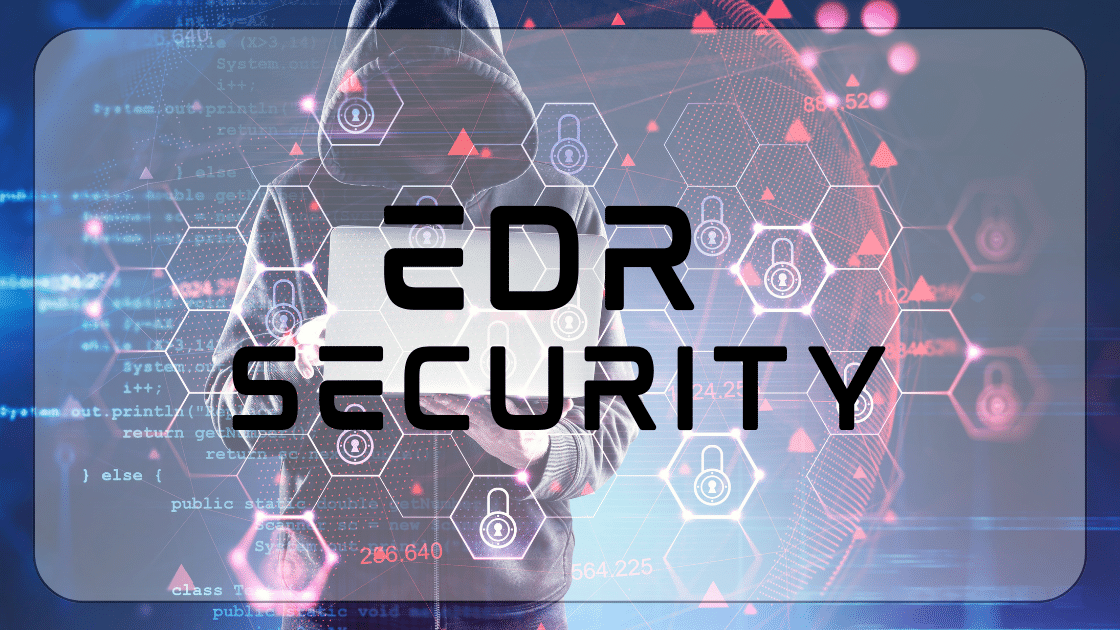Endpoint detection and response (EDR) security are an integral component of an organization’s cybersecurity strategy, protecting against threats that evade traditional security tools like antivirus.
EDR gives organizations visibility into laptops, desktop PCs, mobile devices, servers and cloud workloads in order to detect suspicious activity on them and identify what type of threat is present as well as how best to respond.
Importance of EDR Security
Many companies make EDR security a top priority, as it provides increased visibility of advanced threats while simplifying and expediting incident response. EDR makes it much faster to assess whether suspicious endpoint activity is malicious or part of normal operating system processes than with traditional methods, which often require lengthy investigations – enabling faster responses that mitigate damage quickly while decreasing chances of sensitive data theft.
Software agents installed on endpoints monitor them constantly, collecting telemetry data that is uploaded to a central database where machine learning algorithms analyze it for signs of an attack. Any suspicious activities like trying to log-in remotely or downloading certain types of files are flagged and investigated without interfering with normal operations of an endpoint. In addition, EDR solutions may analyze threat intelligence from various sources to add context for investigations underway.
Once a potential threat is detected, the tool notifies IT teams and gives them all of the information needed to take appropriate actions. This may involve conducting an incident analysis to understand how a file got through and what damage it did – this type of review helps understand full impact as well as prevent similar attacks from reoccurring.
Once the team has identified an attack, it can use EDR tools to implement automated responses such as eliminating infections and isolating endpoints from other systems, while saving files and data stored on those endpoints to allow organizations to salvage files even after malware attacks have taken place. This is essential given how some threats spread rapidly by exploiting capabilities of infected machines to infiltrate other machines on the network via lateral movement.
How EDR Enhances Security?
EDR security allows faster detection and identification of threats, minimizing cyberattack impact and downtime while helping restore business as usual.
EDR solutions combine anonymized data and behavioral analysis to detect advanced threats, offering protection from sophisticated attacks that traditional solutions cannot. EDR goes beyond this standard by analyzing file behavior and attributes to identify new attack vectors like ransomware that traditional tools might miss.
EDR solutions, for instance, can automatically flag files exhibiting malicious activity like changing file extensions or sending money to remote servers. EDR will also scan all file systems in search of additional suspicious characteristics and send you alerts accordingly. Furthermore, EDR identifies and blocks malicious activity immediately to stop attacks before they spread throughout your network, cordoning off affected compartments to reduce both damage caused and speed of spread.
CrowdStrike and EDR solutions also integrate, providing a more complete picture of any attack. This intelligence allows faster identification of TTPs used by adversaries as well as related activities that shorten investigation and mitigation times, creating an effective defense that helps you avoid costly breaches.
EDR Tools Differ from antivirus software
EDR security solutions capture events at the endpoint, similar to how an airplane’s “black box” records data points during and after a crash, then analyze and correlate them using threat signatures or behavioral baselines – datasets made up of events deemed safe such as normal log-in times or file access patterns deemed normal – in order to detect suspicious activity. This solution uses threat signatures as well as compare these events against baseline datasets designed specifically to detect suspicious activities like unusual log-in times or file access patterns which is then correlated against behavioral baseline datasets created from datasets comprised of events known safe events (like normal log-in times or file access patterns) as part of its detection capability.
EDR tools differ from antivirus software in that they look for more subtle signs that a threat has arrived, like process behavior, command and control activities and lateral movement. This allows EDR tools to detect attacks that bypass authentication and authorization controls – such as insider threats and those using compromised credentials.
EDR solutions also offer visibility into endpoint activity, helping organizations better allocate their resources and prevent cyberattacks from spreading across networks. Furthermore, a cloud-based EDR solution with real-time protection can safeguard your organization without slowing down endpoints or producing false positives.
Once a potential threat has been identified, the system generates alerts and provides multiple response options, including blocking specific applications or processes from access by certain users and deleting malware files from endpoints. When integrated with security orchestration, automation, and response (SOAR) tools, playbooks can also be automated across hundreds of security and IT tools, further strengthening defense against attacks.
While these features enhance your ability to detect and respond to threats, it is crucially important to recognize that prevention tools do not eliminate the need for security teams to manage tools, triage alerts and perform incident response tasks. In order to maximize the benefits of EDR security solutions, create policies and procedures outlining how your teams manage tools, triage alerts and investigate threats.
Key Considerations For an EDR Security
An effective EDR security solution monitors endpoint activities and detects suspicious activity, alerting your team before threats have time to spread across your network. Should an attack happen, its EDR tool can contain and mitigate its spread by isolating affected endpoints; should that prove ineffective, its software may also roll back their machines back to prior good states as needed.
Key features to look out for when purchasing an EDR security solution include: Detected new threats – unlike traditional antivirus and firewall tools which rely solely on signature-based detection, an effective EDR tool can spot novel attacks with behavior analysis techniques such as process-based behavior analysis capabilities – such as fileless malware that operates memory but doesn’t write files to disk.
Speed – an EDR security tool should work in real time, offering accurate alerts in real time and automating threat responses. Furthermore, an effective EDR tool must feature minimal false positives while easily integrating with current systems.
Re-imaging or Rollback Endpoints – An EDR security solution should allow for the swift re-image or rollback of compromised endpoints to their prior state without disrupting other systems and applications. This feature is especially valuable if your EDR security solution detects malicious code running on one of your endpoints; having this ability gives your team the chance to quickly isolate and eliminate the offending code to avoid spreading throughout your network. Re-imaging/Reverting processes may be automated or manual based on user preference.
EDR Security in the Cloud
Endpoint detection and response solutions work by continuously monitoring endpoints within a network and analyzing their behaviors for any suspicious activities that might indicate threats – providing swift responses that stop threats before they escalate into full-on cyberattacks or data breaches.
Security teams accomplish this task by collecting log information from each endpoint device; analyzing it for anomalous patterns including process execution, network traffic and user logins; triggering both automated and manual responses when threats are identified; and acting swiftly when any threat arises – enabling security teams to investigate attacks quickly and thoroughly, thus mitigating their effects on business operations.
EDR solutions help safeguard organizations against unauthorized access by identifying malicious code and blocking the download of malware onto endpoint devices. This is achieved by comparing downloaded files against known signatures of malware or other common threats; if found to be harmful, they will be quarantined and isolated from other systems in the organization.
Digital Forensics allows your team to understand what went wrong with its security practices in order to improve them moving forward. This analysis can also serve as an integral element in an incident response plan.
Think of an EDR solution as your team’s night vision goggles against cyberattacks: always on, always scanning all endpoints to protect them from malicious activity – when any attempt to infiltrate endpoints occurs, they’ll be met with full force to thwart it in its tracks and your organization remains undisturbed.













Leave a Reply
View Comments